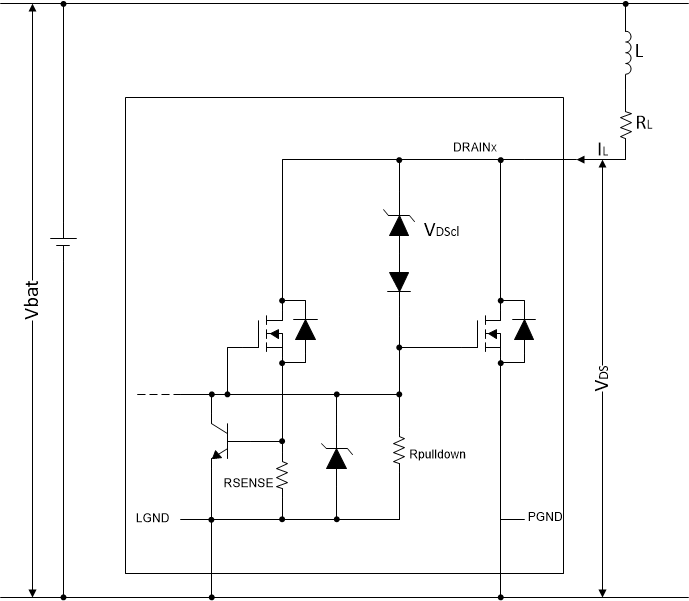JAJSLS0C June 2021 – March 2022 TLC6A598
PRODUCTION DATA
- 1 特長
- 2 アプリケーション
- 3 概要
- 4 Revision History
- 5 Pin Configuration and Functions
- 6 Specifications
- 7 Parameter Measurement Information
-
8 Detailed Description
- 8.1 Overview
- 8.2 Functional Block Diagram
- 8.3 Feature Description
- 8.4 Device Functional Modes
- 8.5 Register Maps
- 9 Application and Implementation
- 10Power Supply Recommendations
- 11Layout
- 12Device and Documentation Support
- 13Mechanical, Packaging, and Orderable Information
8.3.7 Clamping Structure
When switching off inductive loads, the potential at pin OUT rises to VDS(CL) potential, because the inductance intends to continue driving the current. The clamping voltage is necessary to prevent destruction of the device. See Figure 8-1 for the clamping circuit principle. Nevertheless, the maximum allowed load inductance is limited.
 Figure 8-1 Output Clamp Implementation
Figure 8-1 Output Clamp ImplementationDuring demagnetization of inductive loads, energy has to be dissipated in the TLC6A598. This energy can be calculated with Equation 1:
The Equation 2 simplifies under the assumption of RL = 0:
The thermal design of the component limits the maximum energy, which is converted into heat.